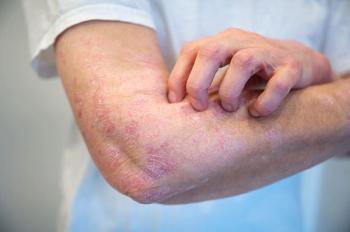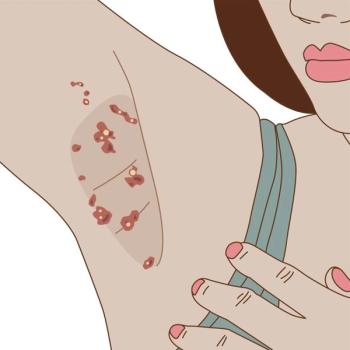
Inverted Follicular Keratosis on the Eyelid
This 3-mm, purplish pink papillary lesion with a crusted top had been present for 6 months at the outer vermilion border of the lower lip of a 65-year-old man. The lesion was asymptomatic.
This 3-mm, purplish pink papillary lesion with a crusted top had been present for 6 months at the outer vermilion border of the lower lip of a 65-year-old man. The lesion was asymptomatic.
It was removed completely with elliptical excision, and the site healed without complications. Robert P. Blereau, MD, of Morgan City, La, and Gillian Redlich, MD, of New Iberia, La, report that the histopathologic diagnosis was inverted follicular keratosis.
This benign, solitary, nodular or filiform lesion arises from the follicular infundibulum and may be up to 1 cm in diameter. Four growth patterns have been identified: a papillomatous wart-like variant, a keratoacanthoma-like pattern, a solid nodular form, and an uncommon cystic type.1 Inverted follicular keratosis occurs most often on the head, neck, cheek, and upper lip; it is more common in males and older persons.
Histopathologic examination typically reveals an endophytic tumor with lobules or papillary projections that extend into the dermis. Squamous eddies are characteristic; they consist of concentric layers of squamous cells in a whorled pattern with overlying variable parakeratosis and hyperkeratosis, which sometimes results in a cutaneous horn.
References:
REFERENCE:1. Weedon D. Skin Pathology. 2nd ed. London: Churchill Livingstone; 2002:131.
Newsletter
Enhance your clinical practice with the Patient Care newsletter, offering the latest evidence-based guidelines, diagnostic insights, and treatment strategies for primary care physicians.































































































































































































































































































































